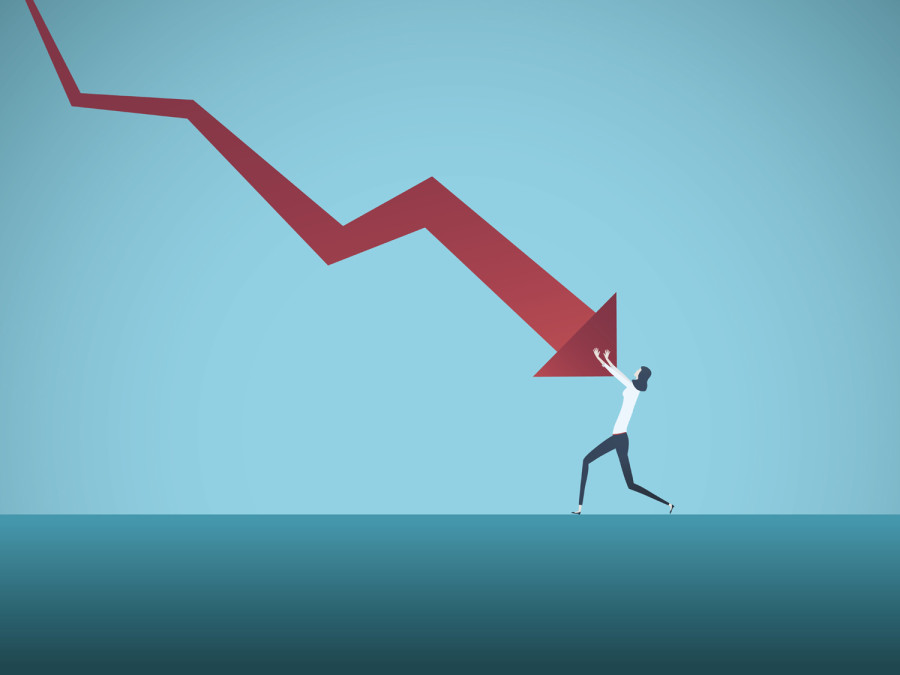Columns
What does the word ‘recession’ say about a recession?
An increasing number of articles using the word has preceded any actual one in the US economy since 1981.
Jagadish Prasad Bist
The term recession has been in the limelight recently. The fear of a global slowdown could be seen in the opinion articles and editorials in renowned newspapers the world over. The fear of a looming recession can be seen in different economic forums also. Economic indicators and the political environment around the world are also fueling such arguments. According to the National Association for Business Economics, 74 percent of economists supported the view that there would be a recession by the end of 2021. The father of the ‘inverted yield curve’, Campbell Harvey, also warned for a possible recession. Some economists, such as David Solomon argued that the chance of a recession in the near term is still relatively low. But, in most other cases, it is interesting to see that the word recession is so entrenched in different stakeholders’ minds. In fact, in 2019 alone (until now, of course), the term ‘recession’ was repeated more than 900 times in The New York Times.
The obvious question to ask is whether the usage of the term actually coincided with an actual economic slowdown. Here, it is important to understand how economists predict a recession. And the inverted yield curve model is a pioneer in doing this job: it has accurately predicted some of the previous recessions. The inverted yield curve, developed by Campbell Harvey, occurs when the yield on short-term Treasury bonds exceed the yield on long-term Treasury bonds. Harvey argued that if an inverted yield curve lasts for more than three months, then a recession occurs over the next 9-18 months. The yield curve followed this trend in the US bond market during the first quarter this year. Similarly, rising unemployment rate, plunging stock markets, waning consumer confidence, declining performance of manufacturing companies, and so-called misery index are some of the barometers construed by economists to predict a recession.
The theory here is that the repetition of the term ‘recession’ usually has some reason: maybe a persistence economic downturn. This may be because businesses might be slowing, return on investment might be plunging, or other political and economic tensions might be rising. While business leaders may base their decisions on data and fact, they may be biased because of the opinion of others, as prescribed in news pages. Consumers, investors, and other stakeholders may take the repetition of the term seriously. For example, an investor may postpone his investment plan due to an article written by economists conveying the fear of a recession in the economy. Similarly, the same article may restrain consumers from purchasing a new house or apartment. Or, the general public may reduce consumption to save for the recession period. It can be argued that the repetition of the word recession has some indirect impact on an actual recession.
In fact, an increasing number of news reports and opinion articles using the word ‘recession’ has preceded any actual recession in the US economy since 1981. The data shows that a recession has followed a three-year period of persistent increment in the use of the term ‘recession’ by leading newspapers such as The New York Times. Moreover, news and articles consisting of ‘recession’ decline consistently in the post-recession period. It is interesting to note that when the usage of the word hits over 3,000 repetitions in a year, a recession occurs in the subsequent year. This case has held true in the recessions of 1981-82 and early 1990s in the United States, the early 2000s, or even the Great Recession of 2007-09. Now, the use of the word in the Times has not only been increasing for the last two years but has also reached a level of usage similar to 2007. Does this mean that we are heading towards a recession? Following the pattern of the past, it can be argued that use of the term ‘recession’ by The New York Times may be a prelude to one in the next year or two.
As Casselman stated, it is difficult to predict with certainty when the next recession is likely to hit the world economy. The relationship between the term recession and actual recession may not be sufficient to offer concrete predictions. But it is more than enough to perceive that the world economy is not performing as expected. Thus, world leaders need to be cautious. Current economic and political indicators worldwide are further reinforcing this fact. The trade war between China and the US, plunging manufacturing industry in America and the Brexit impasse are signs. So are the falling return on long-term treasury bills (inverted yield curve), the economic slowdown in India, China, and Europe and the attacks on oil facilities in Saudi Arabia and hence. All of these issues are further increasing the fear of a global recession.
***
What do you think?
Dear reader, we’d like to hear from you. We regularly publish letters to the editor on contemporary issues or direct responses to something the Post has recently published. Please send your letters to [email protected] with "Letter to the Editor" in the subject line. Please include your name, location, and a contact address so one of our editors can reach out to you.




 8.12°C Kathmandu
8.12°C Kathmandu.jpg)















